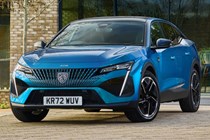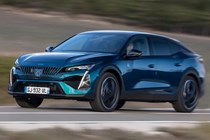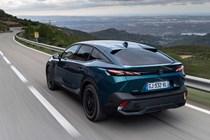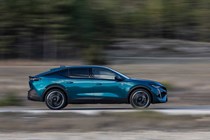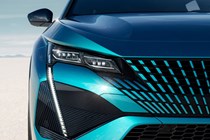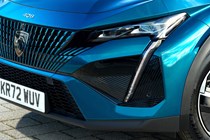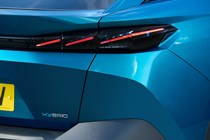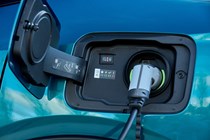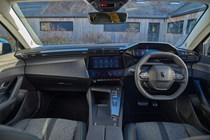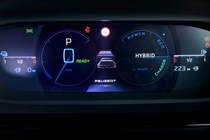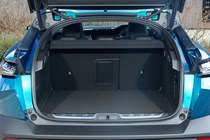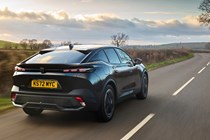
Peugeot 408 long-term test
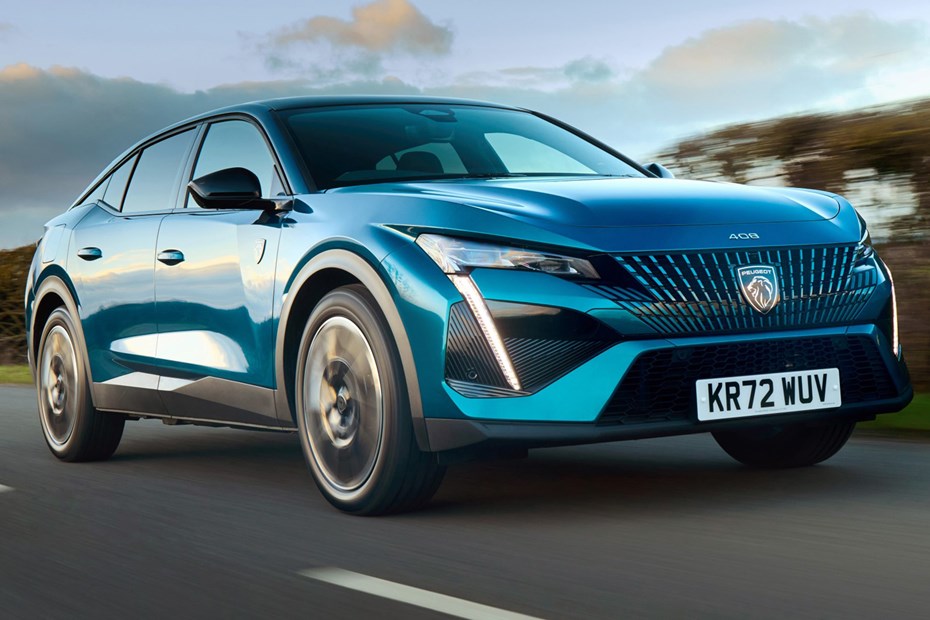
Report 1: Welcome
We welcome the plug-in hybrid Peugeot 408 to our long-term test fleet
Reports by James Dennison
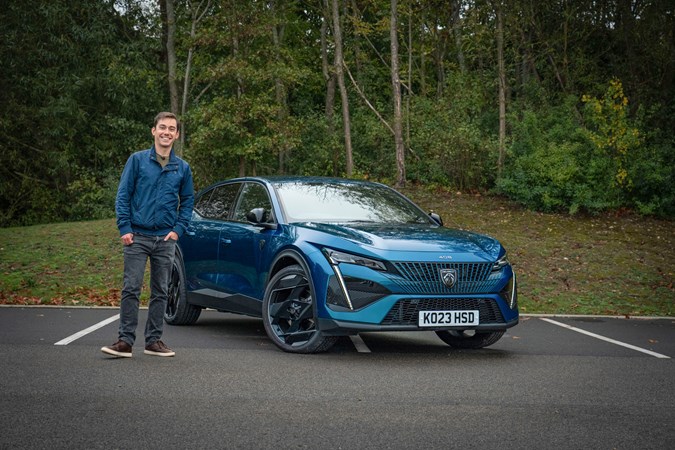
There are a LOT of coupe-SUVs vying for your attention in 2023, but in my opinion the Peugeot 408 is the best looking of the lot – regardless of how much you’re spending. Peugeot’s design department has been on a role since the second-generation 3008 and this is the perfect demonstration of that. But, the question I want to answer over the next six months is whether the 408’s beauty is skin deep, or is it a genuinely useful car that I would happily recommend.
For me, there’s two sides to this question. The first, is how the 408 performs as a car compared with rivals such as the Citroen C5 X, Renault Arkana and Audi Q3 Sportback. However, also crucial is whether I can get along with running a plug-in hybrid because, somewhat incredibly, this is the first time I’ve had a long-termer that’s not pure petrol or diesel in over seven years of road testing cars.
It’s not that I dislike EVs or PHEVs, it’s more that I simply don’t have a place to charge at home and – living five floors up in a block of flats – I don’t currently have the option to change that unless I move. So, as well as finding out what the 408 is like as a regular car, I’m also going to be giving real-world impressions on what it’s like to run a PHEV without a home charging solution and whether it is indeed worthwhile.
Which 408 have we got?
As you may have noted from the above three paragraphs – it’s a plug-in hybrid. Producing a total of 180hp from its 1.6-litre turbocharged engine and 81kW electric motor, the 408 PHEV claims a combined EV range of around 38 miles. It’s fairly nippy on paper, managing 0-62mph in 8.1 seconds and a top speed of 140mph despite a hefty kerb weight of 1.7 tonnes (the hybrid system adds around 300kg).
With the optional 7.4kW single-phase on-board charger (which we have fitted), the 12.4kWh battery should complete a full recharge in 1hr 55mins (without the optional charger, it’s 3hrs 50mins). Use a domestic three-pin plug and you’re looking at getting a full charge in 7.5 hours.
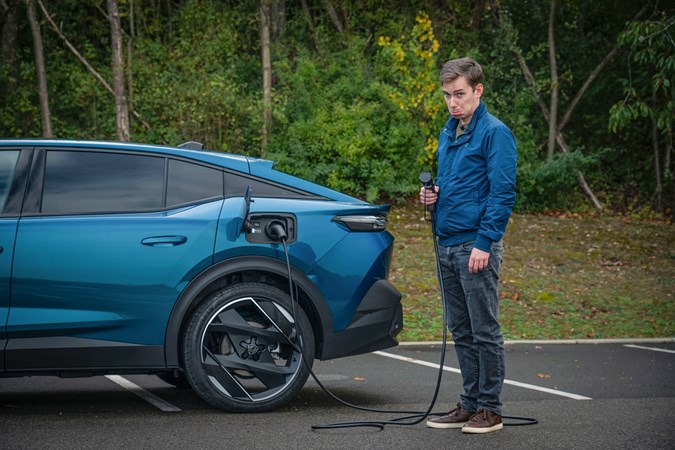
The spec on the car is GT, which is the most expensive version available coming in at £44,850 without options. Or, about £600 a month over three years with a £4,345 deposit and 6.5% APR. With this, you get luxuries such as an electric tailgate, heated steering wheel, Drive Assist Pack and 19-inch diamond cut wheels. This in addition to a generous spec on the lower Allure and Allure Premium trim levels.
This particular 408 also has a strong selection of options, including:
- Wireless phone charger (£100)
- Driver and Passenger Seat Pack – includes heated, electrically adjustable massaging front seats and memory function for driver’s seat (£1,100)
- Drive Assist 2.0 – includes semi-autonomous lane change and Anticipated Intelligent Speed Assist (£500)
- 7.4kW monophase charger (£400)
- 20-inch ‘Monolithe’ Alloy Wheels – Diamond Cut, Matt Onyx black (£300)
No doubt the heated seats will prove invaluable during winter, while the wireless phone charger and 7.4kW monophase charger seem a no-brainer at a combined £500. I love the 20-inch Monolithe alloys, but will wait and see if the Drive Assist 2.0 makes sense in the real world.
First impressions on the Peugeot 408
As I mentioned earlier, I really do love the way this car looks and in my time spent driving it around so far, it’s had numerous looks and members of the public coming over for a closer inspection. The fact I’ve only seen one other 408 on the road certainly helps with the exclusivity factor. Happily, the sleek looks and sloping roofline don’t seem to impact practicality as the boot has swallowed everything I’ve thrown at it, while space in the rear seats is plentiful.
I’m also a fan of the handling – the steering responses and grip are excellent – while comfort on a long-distance cruise is also impressive. That said, I have to comment on the EV range which is not showing anywhere near the claimed 38 miles max (it was down to 19 the other day after a full charge) which is very disappointing and may require further investigation.
Also, I cannot get the app to pair with the car (useful for checking charge status and pre-heating) and have so far not had a response from the support centre. I’ve also noticed a couple of glitches that cause the Apple CarPlay on the system to crash, so I’ll be keeping an eye on whether this continues through software updates.
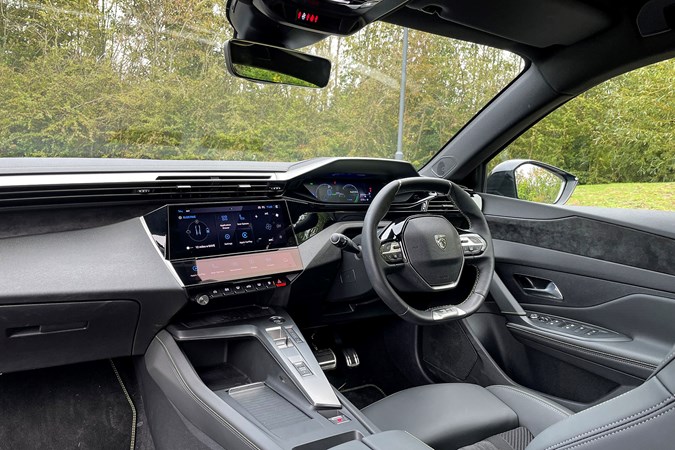
Report 2 – Optional equipment
Are the optional extras on James’ 408 worth it? And which ones does he wish he had?
I’m now a couple of thousand miles into my time with the Peugeot 408 Hybrid, so I thought it would be a good idea to take a look at the options list in the hope of trimming some of the fat off its near £46k asking price. What’s worth the extra money and what’s not, plus, did I miss anything that I wish I now had? Read on to find out:
What options have I got and are they worth it?
20-inch ‘Monolithe’ alloy wheels (£300)
No doubt a controversial one, as the 408’s distinctive wheels have received a mixed reception from my friends and colleagues. Personally, however, I’m a fan and reckon they’re absolutely worth the very modest additional cost.
7.4kW Monophase charger (£400)
Probably the most straightforward choice in the options list. Without the optional charger, the recharge time increases from 3.5 hours to 1.5 hours. For £400, it’s a worthwhile investment.
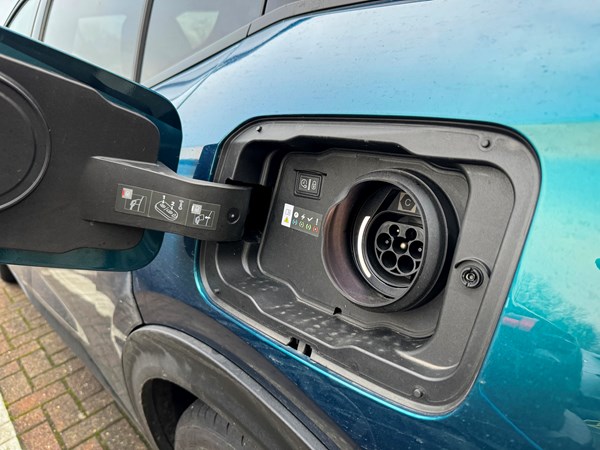
Drive Assist 2.0 (£500)
Almost all manufacturers have their own version of advanced driver assistance tech and some are without doubt better than others. The Peugeot’s includes steering assistance on the motorway as well as semi-automatic lane-changing. However, from my experiences so far, it’s not worth the extra money. Why? It’s not pleasant to use – the adaptive cruise control (standard fit on my car) is too jerky, while the constant nagging of the car to keep your hands on the wheel (when they very much are) is frustrating. You end up having to deliberately pull the wheel one way or the other just to stop the system chastising you.
Driver and Passenger Seat Pack (£1,100)
Pricey, but worth it. Includes heated, electrically adjustable massaging front seats and memory function for driver’s seat. In truth, while the massaging seats are a nice to have they’re not essential. However, the heated seat (especially in my girlfriend’s book) and the memory function driver’s seat are invaluable.
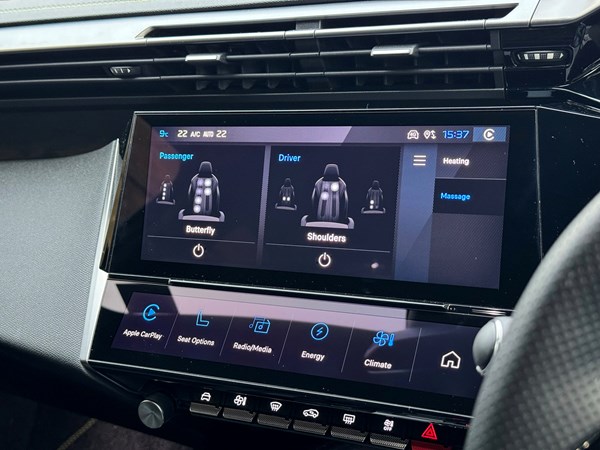
Smartphone wireless charger (£100)
Annoyingly, my iPhone needs to be in a very specific place for the wireless charger to work, thus denting the latter’s appeal somewhat. However, your phone may work better and as the option itself is so cheap, it’s probably worth getting given how handy it is when working correctly.
What options do I wish I had?
Tow bar (£790)
I’ll caveat this one by clarifying that, while a tow bar would be useful, the maximum towing weight (1,200kg) is a little low for what I need. Also, I’m not convinced as to how well the 1.6-litre turbocharged engine with hybrid assistance would be able to pull a heavy load, but I’m willing to be proven wrong on that!
Cielo panoramic opening spoiler sunroof (£900)
A glass roof might make things a little chillier in the winter, but it’s a great way to let swathes of additional light in and brighten up the cabin. Plus, if the weather’s good, it opens up and allows the fresh air straight into the cabin.
360 Vision including 4 digital cameras (£600)
The feature I’d most like to see on my 408. It’s not a small car and living in London the roads are often tight and plagued with dreaded width restrictors. A better view of the car – such as the one provided by a 360-degree camera – would, for me, be invaluable. Definitely worth swapping for the Drive Assist 2.0!
Any other options?
Metallic paint (£650)/pearlescent paint (£850)
The Obsession Blue paint on my car looks fantastic so I wouldn’t bother with paying extra for additional shades. However, it’s unlikely to be everyone’s taste and the alternatives shouldn’t break the bank.
Night Vision (£1,300)
A very clever system and potentially worth it if you do lots of driving on unlit country back roads. Still pricey.
Focal Premium HiFi (£600)
I’ve not heard the upgraded Focal audio system yet so can’t comment on whether it’s worth it, however I can confirm that the standard unit delivers decent sound quality and rarely feels lacking.
Peugeot 408 on Christmas tree duties
It’s that time of year again so the 408 was dispatched to pick up the Christmas tree and it did it without breaking sweat. Granted, it’s not the largest tree (about 5ft 5”), but the car park of the farm featured a sizeable dip that the 408’s raised ride height cleared with ease. Then, walking to the car, I was able to open the boot on the key fob (it does have hands-free opening but I can never get it to work!) and slot the tree straight in having folded down one of the rear seats in preparation. Easy. More on the Peugeot’s excellent practicality in a later update.
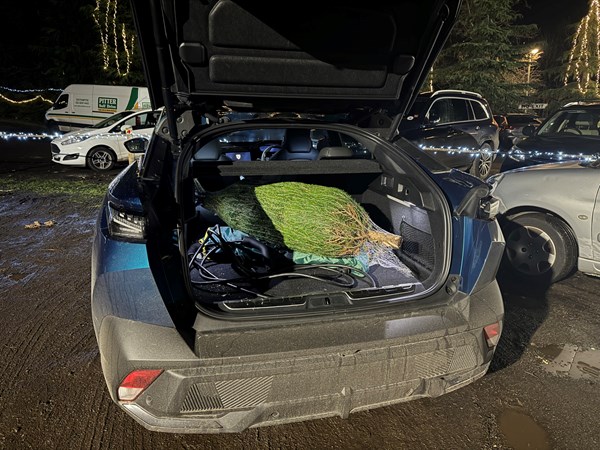
Report 3 – Real-world engine impressions
Plug-in hybrid sounds great on paper, but how does it actually work out in the real world?
I’m now a few thousand miles into my time with the 408 and in this period it’s become clear that the powertrain has a Jekyll and Hyde personality. When the 12.4kWh battery is charged, it’s largely very smooth and reasonably punchy thanks to the well-rounded integration of the 1.6-litre turbocharged petrol engine and electric motors. Granted, if you try and catch it out with a sudden burst of hard acceleration it can feel harsh and a touch clunky, but in most driving scenarios it feels nicely judged.
Driving on low electric range
However, should the range run down to zero it’s a very different story. Immediately, the petrol engine – without the assistance of the motors – feels coarse and noisy, while performance at lower speeds is also impacted. The 408 goes from being a relaxing, satisfying car to drive around town, to one that feels completely at odds with its powertrain.
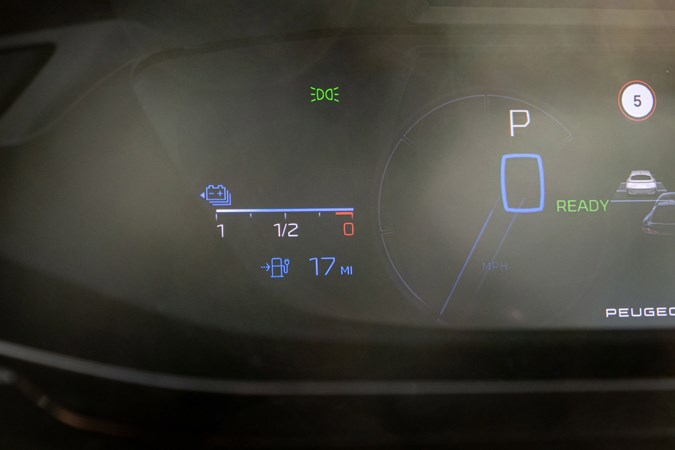
Of course, it’s not alone in this respect. It goes without saying that plug-in hybrids do their best work when charged up, yet the 408’s range has thus far been disappointing and means that I’m often left in a situation where the battery is down to zero miles.
Peugeot claims that this spec of 408 should achieve an equivalent all-electric range of 34 miles, however on colder mornings I’ve switched the car on to find just 17 miles displayed after a full charge. In fact, only when I first took delivery of the car did it show a range of above 22 miles. Therefore, I’m often left with little to no electric range.
Real-world fuel economy
Happily, however, the 408’s fuel economy figures don’t simply drop off a cliff even on zero miles. Over the last 4,600 miles, I’ve managed an average of 56.4mpg – pretty good going considering the type of driving I do and the fact I do not have a home charger. This also includes instances where I’ve been able to drive the car on electric power only (therefore getting theoretically infinite miles per gallon), as well as times when I’ve been running on the petrol engine only.
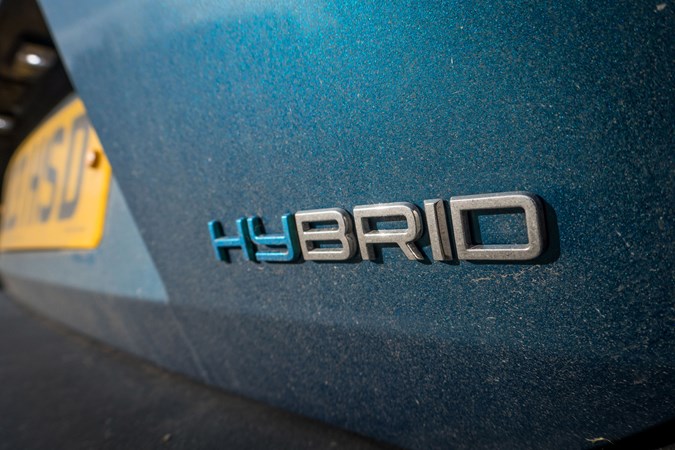
In the case of the former, even longer journeys can deliver fuel economy in excess of 100mpg providing the charge is used wisely. I’ve found on that in order to get the best efficiency on trips that significantly exceed the electric range, putting the car in hybrid mode and programming the sat-nav to the destination delivers the best results – the latter letting the car know not to burn through charge on motorways when the petrol engine is in less need of assistance.
In fact, if the battery range is used on motorways (thus leaving no electric miles for the last few miles in town) the single-journey fuel economy can end up at around 55mpg on my 100-mile trip back from the office. This is only 3-4mpg more than it would be when starting with zero battery range and completing the journey.
The bottom line is that, although the remaining electric range makes little difference to overall fuel economy at high speed, it does have a significant impact on low-speed fuel efficiency. And thus, the lack of real-world range is disappointing. That said, I’m willing to accept that part of this could be down to my driving, so if you have a Peugeot 408 (or any others cars from the Stellantis range that share the plug-in hybrid 1.6-litre turbocharged powertrain), please let me know what kind of fuel economy you’re achieving.

Report 4 – Practicality
Tardis or titchy? James examines whether the sleek lines of the 408 spoil the amount of available space…
Here’s one of the biggest surprises about my time with the Peugeot 408 – I’ve been deeply impressed with the level of space it offers. When I first clapped eyes on its coupe-esque body style and svelte, graceful roofline I immediately decided it was the kind of car that put looks and presence above everyday practicality – but I was wrong.
Cabin space
Up front in the 408, the car’s width pays dividends. It’s an airy, spacious place to sit and pulls off the clever trick of making the driver feel cocooned but not hemmed in. There’s also a wealth of storage space, with large side pockets in the doors, a useful area under the split armrest and sensibly placed cupholders.
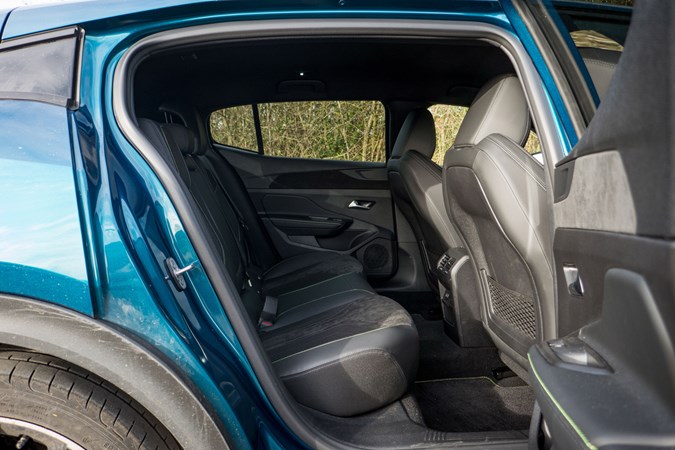
Climb into the back and it’s a similar story. Granted, storage space isn’t quite as generous (you do still get cupholders, nets and large door pockets) and there’s no separate climate control dial for the rear-seat passengers, but the space fools just about everyone that gets in. Leg room is extraordinarily good even with a tall occupants up front and there’s enough room to slide your feet under the seats.
I’ve never had any complaints when it comes to rear headroom and while it’s plenty enough for my 5’10” frame, I understand that cars with the panoramic roof take a significant chunk out of this. Still, this isn’t an issue unique to the 408 and the rear-seat space still impresses. Also, the doors open wide enough to install a baby seat, the windows are of a decent size and the dual USB-C charging ports are inevitably handy.
Boot space
If you’re looking at getting a Peugeot 408, the available boot space depends not just on what powertrain you pick, but also whether you opt for the optional FOCAL Premium HiFi system. Opting for either robs space from the boot, more so in the case of the former.

Speccing a straightforward 1.2-litre Puretech petrol 408 would get you 536 litres of boot space with all five seats in place and 1,611 litres with them folded down (they fold in a 60:40 split). Opt for the hybrid – like I have – and this falls to 471 and 1,545 litres with much of the space being robbed from the storage compartment under the floor. It’s still big enough (just) to store the charging cable, but it’s such a faff to squeeze it in I usually place it in the main boot compartment.
Finally, if you go all out and spec the £600 optional HiFi system, it takes away a further 17 litres from the hybrid and 28 litres from the Puretech. Even so, the 408 compares well with the Citroen C5 X and has never left me wishing for more cargo capacity.
Electronic tailgate
Don’t get me wrong, the electronic tailgate is handy. Not only do I find it useful being able to pop the boot as I’m walking towards the car – it allows me to unplug the cable and quickly stow it away – but also, and this is going to sound feeble, it’s a big old piece of glass and metal to manhandle even with both hands free.
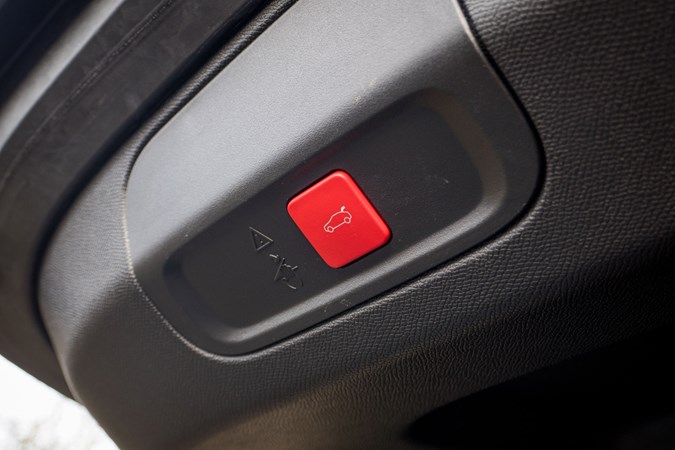
Although, speaking of which, there’s supposed to be a function that allows me to open the 408’s tailgate without pressing anything. All I need to do is wave my foot under the rear bumper (with key in pocket) and – TA DA – it opens. At least, that’s how it’s supposed to work. In reality, I can never get it to work when I want it to, yet I have been clobbered on the head several times by the boot lid after it thought I wanted it to shut. I’ll keep trying with that one…
Report 5 – Long drive with the family
How does the Peugeot 408 cope transporting two adults and two kids nearly 1,000 miles in a weekend? Adam Binnie reports…
A weekend trip from Peterborough to Cornwall was already a bit of a stretch, and to avoid spending 50% of our mini-holiday at an EV charger, I decided going in something with a bit more space and range than my Citroen e-C4 X long termer might be a good idea.
Before you dive in, I’d have gladly done the trip on battery power if we were going for a week, and if our accommodation (or anywhere in a 20-mile radius of it) had somewhere to charge the car. But leaving Friday night and coming home Sunday, the trip was already a tight turnaround.

The journey was threatening to take nearly six hours and we’d likely need to charge at least three times, adding three hours to the total, at best. We’d only be there for a few hours before needing to charge up for the drive home!
Equally I’ve had my eye on James’s Peugeot 408 for a while. It’s based on the same underpinnings as my former Citroen C5 X long termer, a car I absolutely loved, but with a few subtle tweaks that I reckoned would make it an even better family car.
What makes the Peugeot 408 different to the Citroen C5 X?
It’s got incredibly eye-catching paint – a sort of blue-to-green flip you used to see on TVRs, which does a great job of highlighting the sharp styling. Every panel has an acute crease in it somewhere, and it looks more like an SUV than a high-riding estate car.
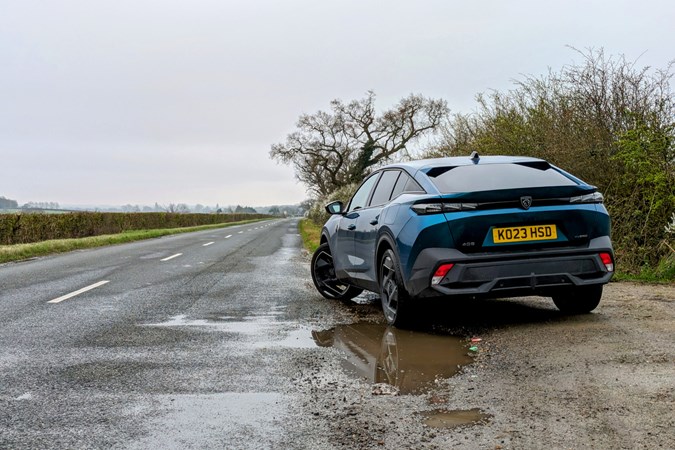
The Citroen C5 X is much more rounded and softer on the eye and this is reflected in the way it rides too. Advanced Comfort suspension with progressive hydraulic cushions combine to give the C5 X the kind of waft the French maker was famous for in the past. It was supremely relaxing when driving solo.
From time to time though it could also make my kids feel a bit seasick, and even in its firmest mode, it possessed a degree of floatiness that could accumulate on a long journey and result in increasingly green-looking faces peering at me in my rear view mirror.
How does the Peugeot 408 ride in comparison?
The Peugeot is much more tied down. It’s not uncomfortable but lumps and bumps in the road find their way into the cabin more readily, which makes the car feel more connected to the tarmac. Contrary to what you’d expect, my kids preferred this to the big Citroen.
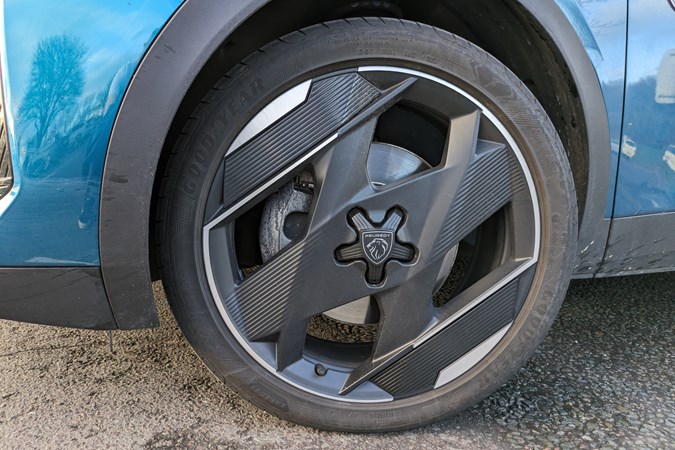
The handling benefits too, and is given extra agility by the tiny wheel mounted low beneath the dials. The steering is very fast for a car of this size and this makes it feel nimble on a windy Cornish road, but it’s a bit of a pain on the motorway where you just want to go in a straight line.
Like my old Citroen, the Peugeot feels wide, as if it only just fits in its lane. If you have the steering assistance activated it seems like you’re being constantly bounced between the lines like a bowling ball at a kid’s birthday party.
I’m aware this could be a personal thing, but I preferred to just leave the cruise control in adaptive mode and steer myself. Even so, you have to be careful with your inputs on the wheel because too sharp a turn sees you darting across lanes.
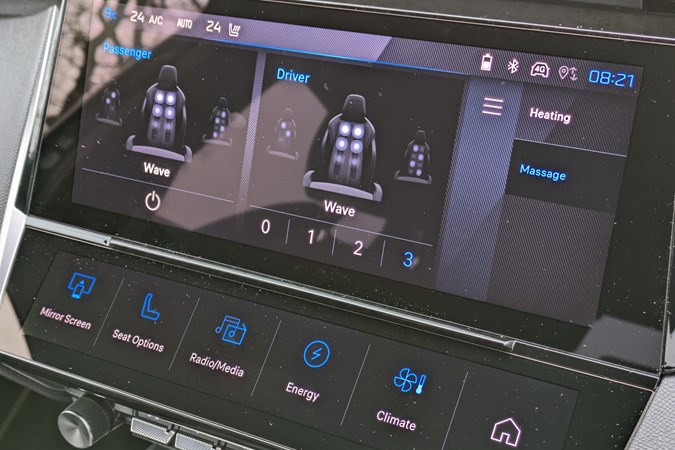
The rest of the interior is a step above the Citroen’s, I think, with the fancy holographic dials and a large and impressive touchscreen sitting above a smaller, thinner unit with shortcuts on it. The menus weren’t as intuitive as in the C5 X though, meaning we were often swiping left and right trying to find the function we wanted.
You do still get a row of physical controls underneath, which on one hand means everyone is catered for whether you like a touchscreen or buttons, but on the other looks the designers couldn’t commit one way or the other.
Is the boot big enough?
You’re similarly catered for if you can’t decide between styling and practicality – as James highlights in the previous update, the abundant bootspace on offer (471 litres) seems at odds with the svelte roofline, giving the 408 surprising luggage capacity.
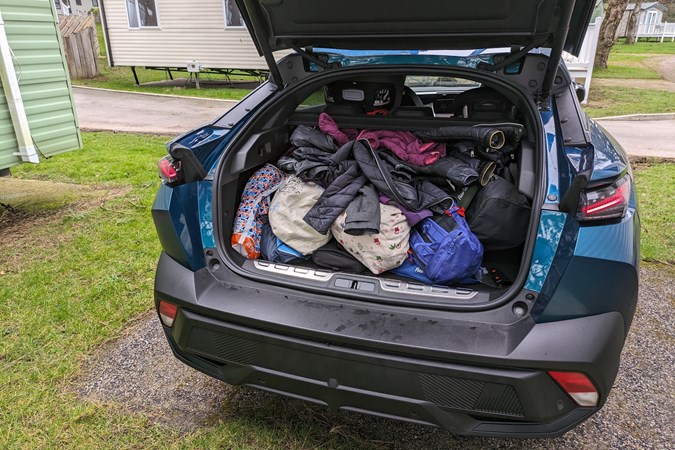
We managed to fit everything we needed for a two-night camping (well, caravanning) holiday for four people in with surprising ease, without having to pack the boot so high it blocked the rear window.
My kids also had loads of leg and headroom in the back (admittedly they are pretty short, because they’re kids) but even sat behind my own driving position I also had enough space, and I’m 6’2″. This is a very spacious car.
Performance
One area where the Peugeot lagged behind my old Citroen was in the performance department, as the 408 has a slightly lower powered version of the plug-in hybrid engine. But in all honesty its 180hp never felt inadequate.
That is, unfortunately, until the battery runs out, at which point you’re left with a 1.6-litre petrol engine that does an alright job of shifting the 408’s bulk, but as James has pointed out, does so with a noticeable increase in noise transmitted into the cabin.
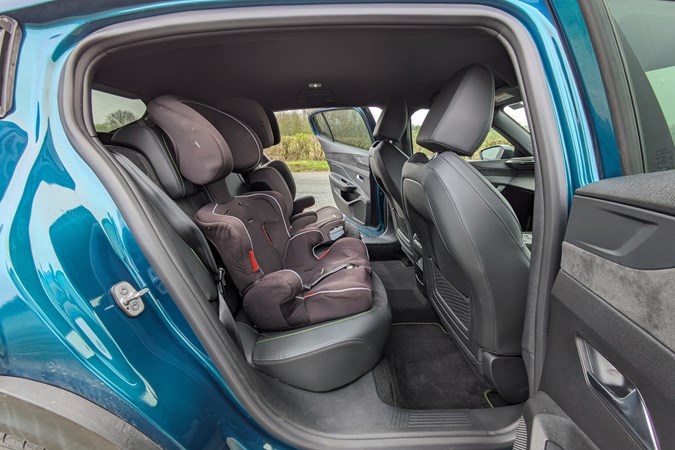
I found this with the Citroen C5 X too – it’s simply a much nicer car when the battery is fully charged. With nowhere to top up at our destination we spent most of the weekend in pure petrol mode, which I suspect has had a quite detrimental effect on James’s fuel economy. Sorry.
Peugeot 408 vs Citroen C5 X
Overall though we really enjoyed the 408 – its firmer ride and fancier looking interior impressed my kids and both my wife and I were very pleased by the return of massaging seats, which were activated pretty much permanently.
If I was doing a lot of solo miles I think I’d still pick the Citroen. The big squashy armchair and cossetting ride melt away the hours spent behind the wheel, and my long termer also had double glazing, which made it significantly quieter at high speed.
Passengers didn’t seem to be quite as enamoured by it as I was though, and if your family get nauseous on long journeys, the Peugeot 408’s suspension manages to be comfortable enough without floatiness.
Although, speaking of which, there’s supposed to be a function that allows me to open the 408’s tailgate without pressing anything. All I need to do is wave my foot under the rear bumper (with key in pocket) and – TA DA – it opens. At least, that’s how it’s supposed to work. In reality, I can never get it to work when I want it to, yet I have been clobbered on the head several times by the boot lid after it thought I wanted it to shut. I’ll keep trying with that one…
Report 6 – Is the MyPeugeot app any good?
James takes an in-depth look at the Peugeot phone app – does it really improve the ownership experience?
Many cars nowadays come with the promise of a super-useful phone app designed to make your life easier. A cynic might say that more tech equals more things to go wrong, but what’s the 408’s MyPeugeot app been like to use over the last few months?
MyPeugeot app glitch
Well, things didn’t get off to a particularly smooth start. I simply could not get the app to pair with the car and, I’ve since found out, I was not the only one. After adding the VIN number and mileage of the vehicle, I simply got a message saying ‘a technical problem has occurred, please try again’. Hmmm…
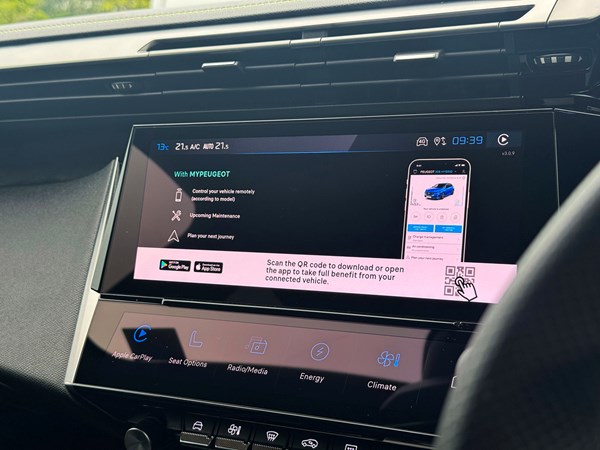
However, after much back-and-forth with the support team (if it wasn’t my job to review it, I may well have given up), the pairing process finally worked and the app was paired with the car. Great – so what does that get me?
MyPeugeot app features
For starters, I can see where the car is. Not hugely useful for me, as the car is – hopefully – where I left it, yet for those who lend their car out to others, it could come in handy. It also keeps a log of your trips and the fuel economy achieved plus your service schedule. And, if you want to remotely beep the horn, pre-set the sat-nav, turn on the headlights and lock/unlock the vehicle, it can do that too.
Unsurprisingly, though, it’s most useful set of features for me is linked to the car’s electrified powertrain. See, the app allows me to check the vehicle’s charging status, and defer charges (for times of day/night when electricity is cheaper) remotely, meaning I don’t have to set it in the vehicle itself.
Finally, and perhaps most valuable of all, is the climate feature. Like most EVs (and a select few ICE cars), I can pre-heat or pre-cool the car before a journey and this, in the winter, is an extremely welcome feature.
Does the app always work?
After the drawn-out saga of getting the app to connect to the car in the first place, it’s actually been reliable. Granted, it’s not the slickest UI and some features take longer to activate than you’d like (switching on the pre-heater for example), but it’s never let me down during my time with the car. Therefore, if you’ve got a 408 (or indeed, any Peugeot compatible with the app) and you’re struggling to set the app up correctly, stick with it as the end result is definitely worth having.
Report 7 – Farewell
James bids goodbye to his Peugeot 408 long-termer after seven months and many miles behind the wheel – but would he recommend it?
When I first found out that I would be running a Peugeot 408, I was immediately drawn to its striking styling and promise of plug-in hybrid convenience. Chic but practical – surely that’s the best of both worlds? As it turns out, it mostly fulfilled that promise and I’m sad to see it go, but what are the things to consider if you’re thinking of buying one.
Plug-in hybrid – yay or nay?
On paper, the 1.6-litre plug-in hybrid powertrain in the 408 looks ideal. A 12.4kWh battery gives a claimed electric range of 34 miles and takes under two hours to recharge. However, what I found in winter was that this range could drop to around 17 miles after recharging overnight in low temperatures.
Given that the car is far nicer to drive when there’s range in the battery (it’s much smoother and quieter), it made me question whether an all-electric 408 (which is on the way) would be a better bet. The hybrid powertrain means you need to commit to charging the car anyway, so why not go the whole hog and go full EV?
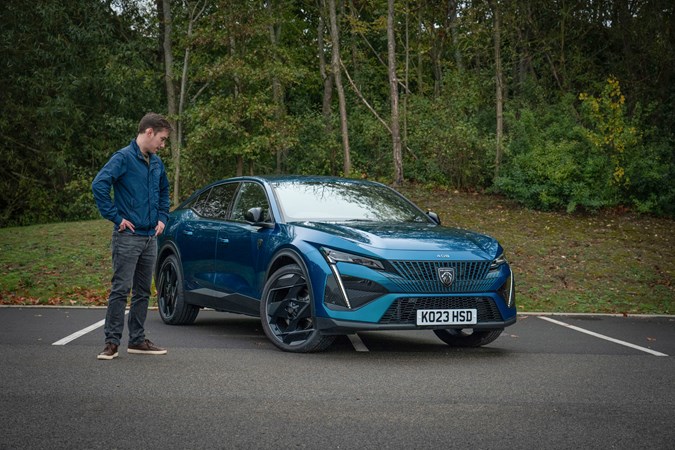
I could only think of one real exemption to this where the 408 plug-in hybrid would make more sense. If you spend your weekdays driving short distances (less than 10 miles), but then go to a second home with no domestic charging or fast chargers nearby on the weekend, the petrol engine makes sense. Otherwise, it’s hard to recommend buying the plug-in hybrid rather than waiting for the 408 EV – or just getting the 1.2-litre Puretech.
Excellent practicality
‘Well that can’t be very practical’ were the words a friend of mine uttered when they clapped eyes on the 408 for the first time. They were of course referring to the car’s svelte looks (one of my favourite bits of the car, incidentally) that while aesthetically pleasing, surely can’t leave much room inside.
Wrong. I’ve constantly been surprised at just how practical the 408 is. Granted, I don’t have the optional panoramic sunroof that would rob headroom, but leg and foot room is excellent regardless. Also, boot space is more than ample, just keep an eye out for the hybrid powertrain and optional FOCAL Premium HiFi system reducing outright space.
Stylish cabin, but not perfect
I’m a fan of Peugeot’s cabin design language and I reckon they make some of the most interesting cars – to sit in – around their price point. For example, the touchscreen shortcut buttons and multi-level dashboard are both highlights, as is the alcantara trim on the doors and seats. I’m even a fan of the small steering wheel. Yes, some find it a pain ergonomically, but for me it sits just right and means I don’t have to elevate my arms as high on a long journey.
Things I’m less a fan of? There’s a dearth of physical controls (but this is far from just a Peugeot issue, mind) and I found it too easy to lose entire cars in the over-the-shoulder B-pillar blindspot. Also, I was constantly reminded of a poor piece of design in the infotainment system where it took two touches to turn off the active lane-keeping, but only one to deactivate traction control. I know which one is more crucial to safety…
On the whole, however, I firmly believe that the 408’s interior is one of its biggest selling points. Spacious, plenty of tech, interesting and (mostly) free of irritating bits of design. A job well done.
Worthwhile optional extras
When I received the 408, it had £2,300 worth of optional extras fitted. Being brutal, I reckon you only need one of those additions – namely, the 7.4kW Monophase charger at £400. This is because it cuts the recharge time from 3.5 to 1.5 hours – money well spent.
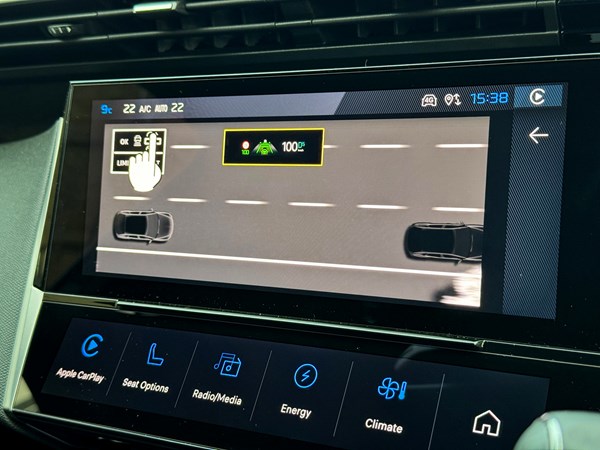
Otherwise, the 20-inch ‘Monolithe’ alloy wheels (£300) look great but aren’t essential, Drive Assist 2.0 (£500) isn’t the best at helping you cruise semi-autonomously down the motorway and the Drive and Passenger Seat Pack (£1,100) is an unnecessary luxury. That said, if you share the car with your other half, the memory seat function it provides is useful.
Verdict
So, should you spend your hard-earned on a Peugeot 408? Yes, but either go for the 1.2-litre Puretech petrol or wait for the EV version coming later in 2024. I don’t think the plug-in hybrid powertrain is a disaster, but it does open the car up to criticism that the rest of it does not deserve. It’s good-looking, spacious, reasonably comfortable and handles sweetly. However, on the evidence of the Peugeot EVs I’ve driven recently, there’s more to come from the 408…
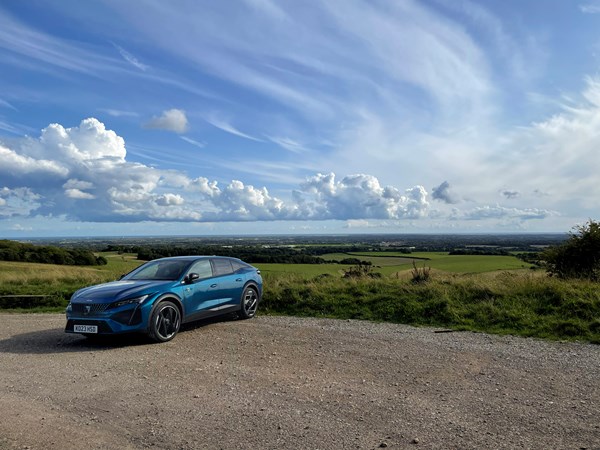
If you have any Peugeot 408 ownership impressions you’d like to share, please get in contact on Twitter, Instagram or at james.dennison@parkers.co.uk.
| Peugeot 408 Hybrid 180 e-EAT8 long-term report | |
| Mileage | 12583 |
| Real-world average fuel economy | 57.9 mpg |
| Official combined fuel economy (WLTP) | 214.7-270.3mpg |
| Parkers mpp (Miles per Pound) calculation | 6.1 – 6.8 mpp |
| Car joined Parkers’ fleet | September 2023 |



